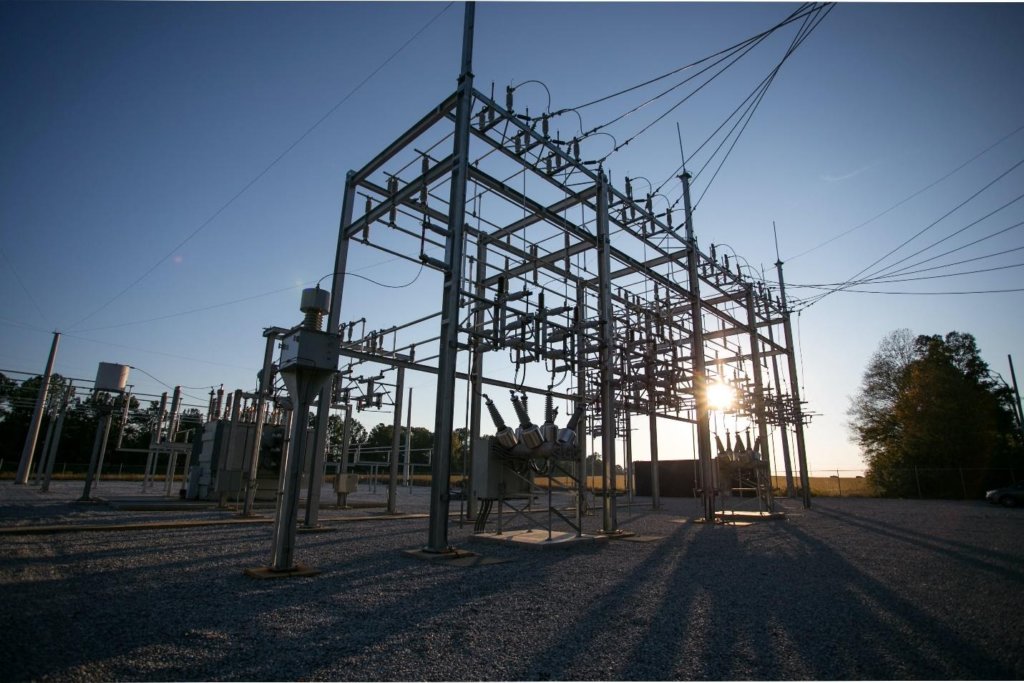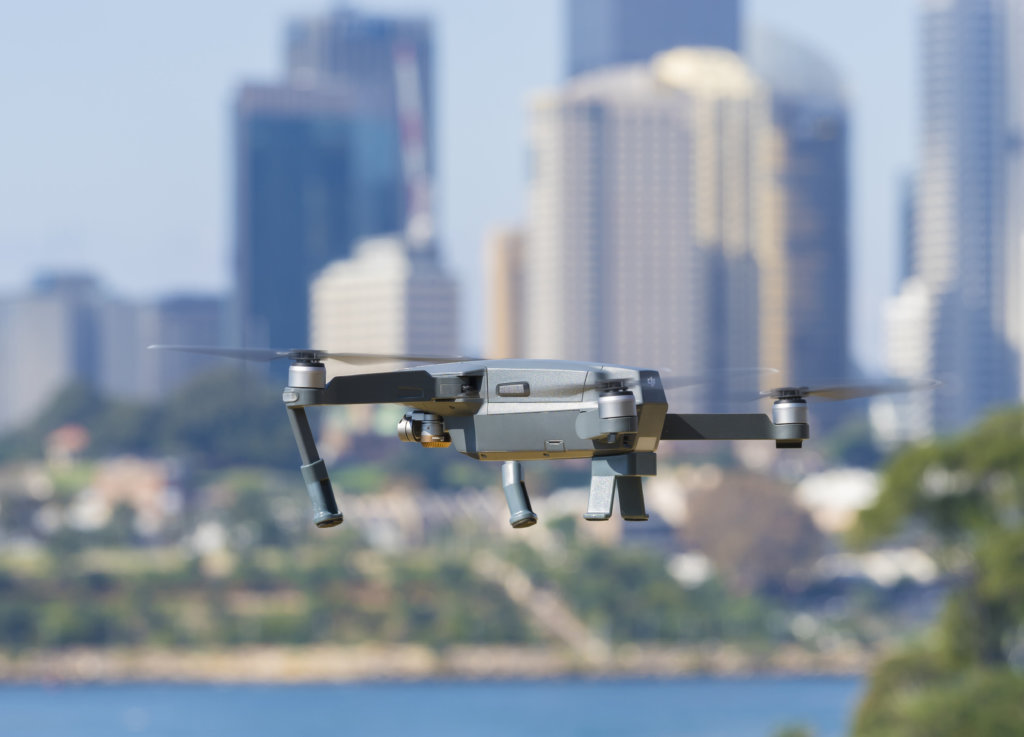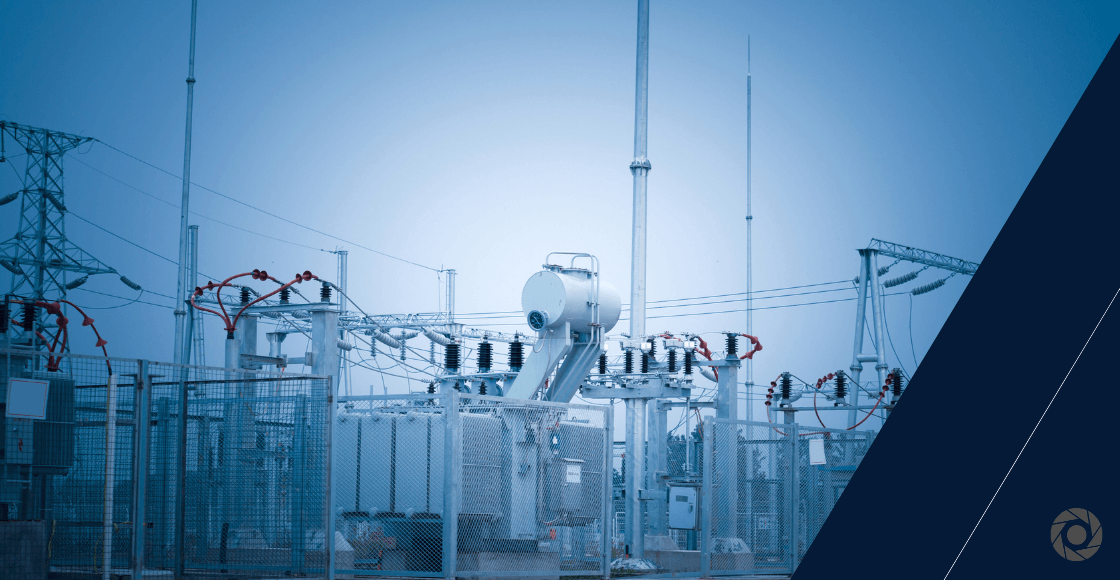When it comes to power transmission, electricity providers can’t leave anything to chance. This reality became abundantly clear following the 2021 power outage in Texas, which may result in more than $19 billion in damages—on par with Hurricane Harvey.
In order to avoid suffering the same fate, energy companies need to go above and beyond to ensure all components of the electric transmission chain remain secure and in working order.
As such, one fundamental piece that companies need to prioritize during inspections is transmission and distribution substations.
What’s a Substation Inspection?
In a typical electricity transmission, power comes from generating stations and gets distributed over transmission lines.
After that, the power then runs through transmission and distribution substations. This can ensure safe and efficient power flow to commercial, residential, and industrial customers.
Transmission substations contain transformers, which receive and convert very high power loads into less than 10,000 volts. The substation may also contain additional components to safely direct the flow of power to different destinations.
With so much power flowing into a substation—and so on down the line—electricity providers need to make sure substations are safe and operationally efficient.
To this end, electrical providers conduct routine substation inspections to assess equipment and perform maintenance.

Checklist for Electrical Substation Inspections
Since every electricity provider is different, the actual list is going to vary depending on your company’s exact deployment and local environment. That said, here are some of the top things to consider during a substation inspection.
Identifiable Information
Electrical companies often have many substations. This makes it vital to collect basic identifiable information during routine inspections. Some of this information includes:
- Substation details: The information on a substation report should match the substation’s nameplate. It’s also important to make sure each substation has a unique nameplate in clear sight.
- Inspection details: The report should also contain the exact date and time of an inspection.
- Inspector details: It needs to be abundantly clear who completes each inspection, as well as their name, title, and contact information. For quality control purposes, inspection managers should also receive automated reports.
Safety and Security
It’s also critical to report basic safety and security information during a routine inspection. This enables you to make sure that substations aren’t posing hazards to local communities or operating teams.
To do this, here’s what you need to consider:
- Physical access controls: Each report should contain fields for fencing, doors, locks, and security systems. To ensure compliance, you should also take pictures on a regular basis.
- Monitoring systems: Teams should inspect alarm systems, fire control and suppression systems, and security cameras for operational efficiency.
- Digital security: All connected systems should remain fully monitored to protect against cybercriminals. After all, electrical infrastructure is a top target for cybercrime.
- Signage: Each substation should have a “no trespassing” sign in plain sight. And there should be a clear and legible “danger of death” notification.
For the best results, teams should also check local regulatory policies on safety protocols for special signage requirements or additional measures to keep people out of harm’s way.
Substation Structure
You’ll also need to examine the structure itself. Here’s how to do that:
- Roof, walls, gutter, and paint: Check the exterior and interior of the substation for peeling paint or signs of damage. Roofs, walls, and gutters also require inspections.
- Stones: Exterior substations should contain stones to reduce ground potential rise (GPR). Monitor exterior flooring for signs of damage or theft.
- HVAC: Substation should contain operationally sound heating, ventilation, and cooling components to protect against temperature fluctuations.
- Interior and exterior lighting: Lighting systems should be in working order and up to code.
- Connectivity: Check substation connectivity to ensure connected systems can communicate with remote endpoints.
Additional Items to Inspect
Here are a few more items you don’t want to overlook:
- Transformer: The transformer is one of the most important parts of a substation. It should be thoroughly inspected for stability and efficiency.
- Bus connections: The bus is where multiple components like loads, generators, and feeders come together. As such, it’s vital to inspect buses for stability.
- Anti-condensation system: You should also inspect anti-condensation systems to ensure they’re capable of detecting and mitigating condensation. This is important for protecting against corrosion.
A Brief History of Substation Inspections
The U.S. electrical grid went through a major transformation in the 1960s and 1970s, as companies began using supervisory control and data acquisition (SCADA) systems to interface with critical infrastructure and collect operational data.
Early SCADA deployments were very limited in scope. The SCADA systems of the first generation were monolithic architectures based on large-scale mainframe systems.
The industry is moving toward a state of greater automation.
The technology improved considerably over the years with advancements in connectivity and computing. Local area networks (LANs) were eventually established, followed by wide area networks (WANs), and eventually open system architectures.
At present, most electrical companies are using a combination of networked SCADA systems and manual inspections to monitor substations. And the industry is moving toward a state of greater automation.
But right now, substation maintenance still typically involves a hybrid approach to inspections using human and machine resources.
Looking Forward: Where Substation Inspections Are Heading
Now that we’ve taken a brief look into the past, let’s focus on the future.
Mobile Apps
Electricity providers are going through digital transformation. Processes such as substation inspections are becoming increasingly digitized and automated.
Teams are no longer relying entirely on paper systems to collect and transmit inspections. Now, many companies are using mobile apps and digital programs to generate reports and manage workflows.
Integrating mobile workflows enables greater accuracy and accountability while eliminating careless data-entry errors. Mobile apps also make it faster and easier to enter data, expediting reporting and reducing back-end work.
Real-Time Data Transmissions
Up until recently, electrical companies struggled to collect and transfer data from substations. However, recent advancements in real-time data processing and data pipelines make it possible to move large volumes of information very quickly.
Looking forward, electric companies will increasingly rely on real-time data transfers to assess substation quality at scale. Teams will be able to instantly recognize system trends and fluctuations for advanced maintenance and rapid response troubleshooting.

Uncrewed Aerial Vehicles (UAVs)
Many electrical teams are also using UAVs—often called drones—to conduct physical inspections over large geographical areas.
In the past, inspection crews had to physically travel to individual endpoints to monitor infrastructure. Now, this process is largely being replaced by drones. Teams can set up in centralized locations and fly drones from substation to substation, reducing travel and enhancing safety.
Drones can take pictures and video while getting closer to infrastructure in dangerous areas than humans could.
Iris Automation enables beyond visual line of sight (BVLOS) drone usage, using advances in onboard detect-and-avoid technology.
How Iris Automation Enables Drone Usage
Right now, most commercial drone deployments are visual line of sight (VLOS) operations. That means operators need to be able to maintain sight of their drones during flights.
This limits drone usage for commercial deployments, as drones can travel only short distances without visual obstruction.
Iris Automation enables beyond visual line of sight (BVLOS) drone usage, using advances in onboard detect-and-avoid (DAA) technology.
Using Iris Automation’s Casia DAA system, electrical maintenance crews have the potential to fly drones greater distances while maintaining safety and regulatory compliance with the Federal Aviation Administration (FAA).
To learn more about how Iris Automation can help your energy company ensure substations are in optimal order at all times, check this out.
This post was written by Justin Reynolds. Justin is a freelance writer who enjoys telling stories about how technology, science, and creativity can help workers be more productive. In his spare time, he likes seeing or playing live music, hiking, and traveling.

